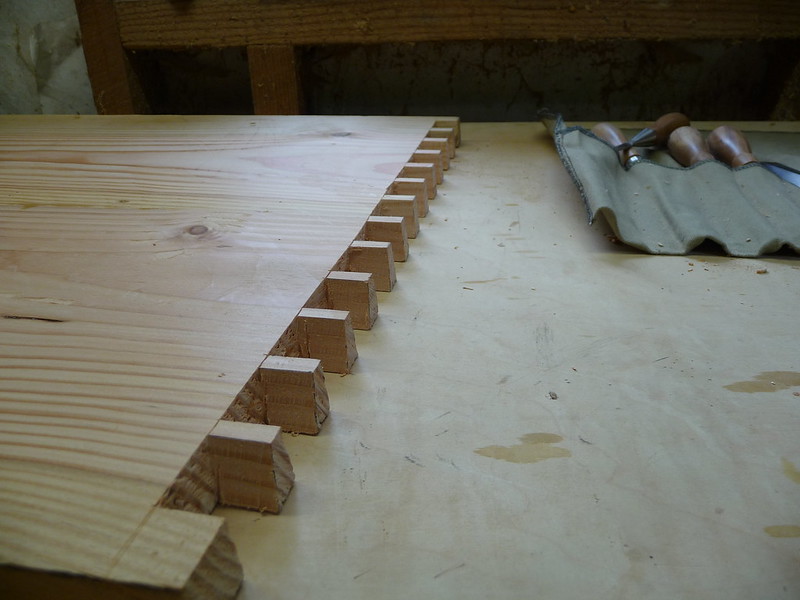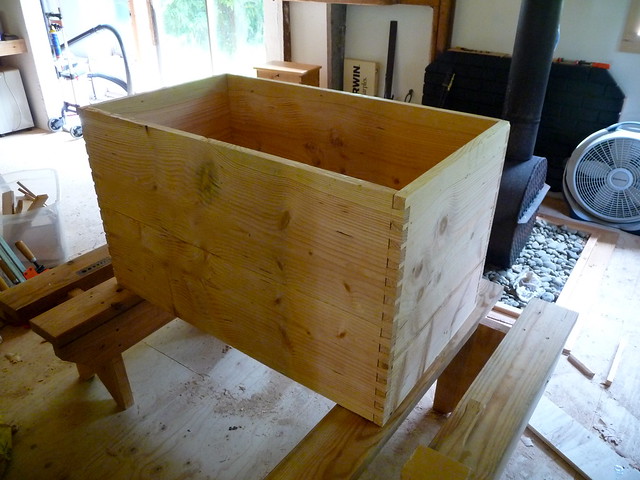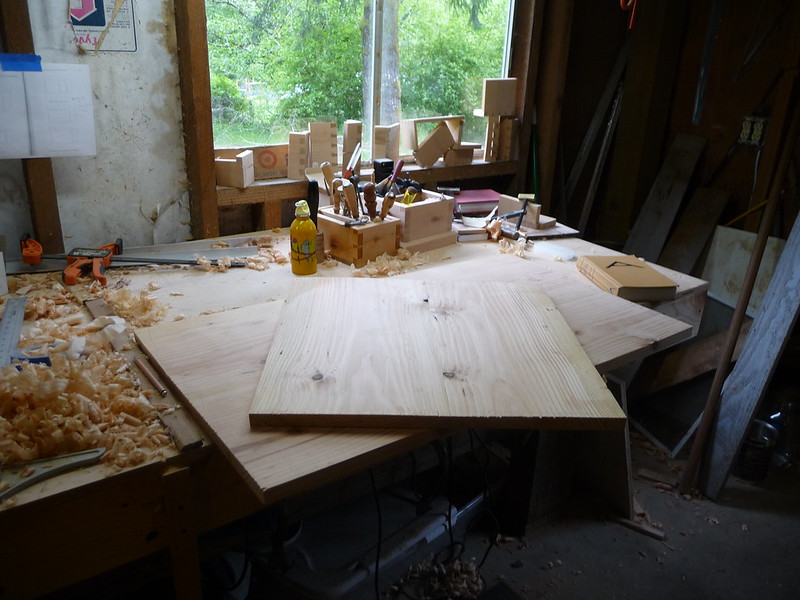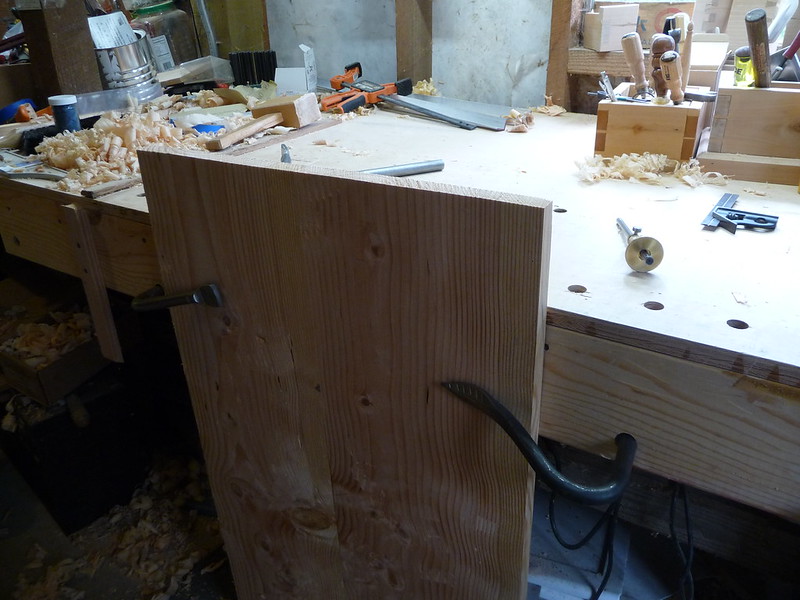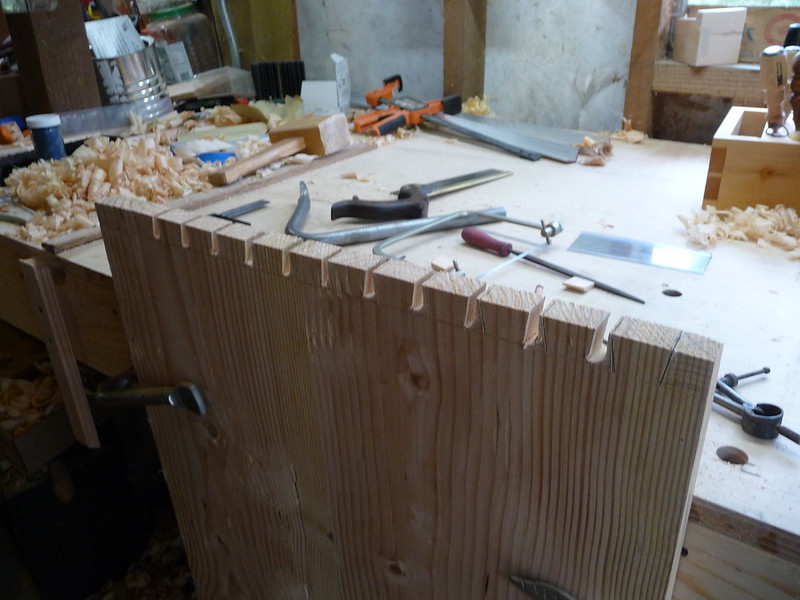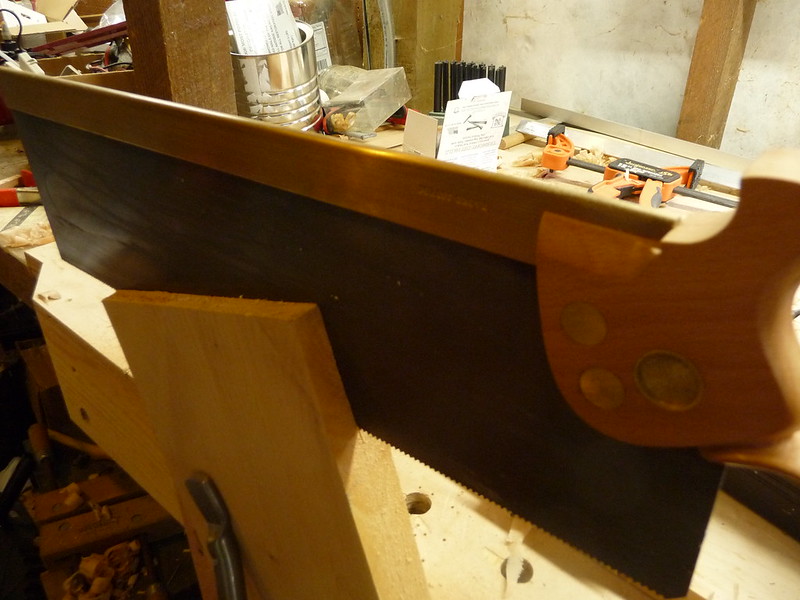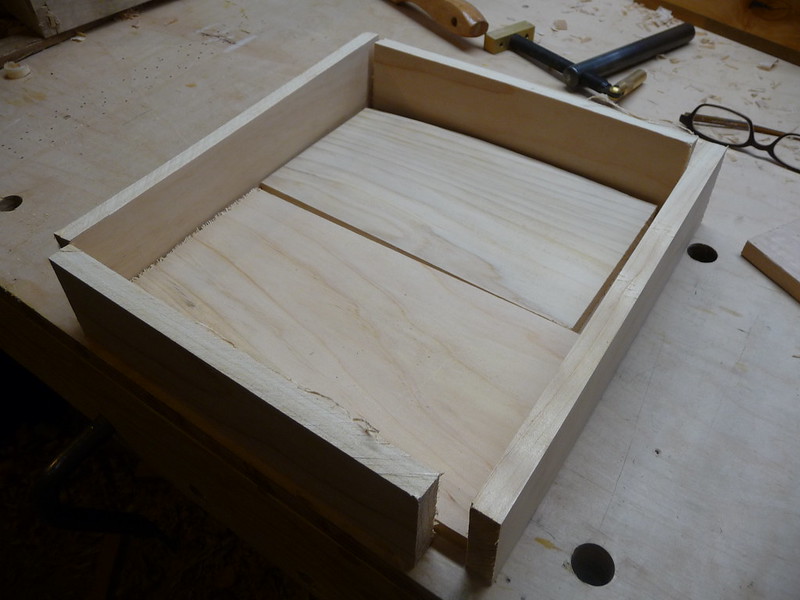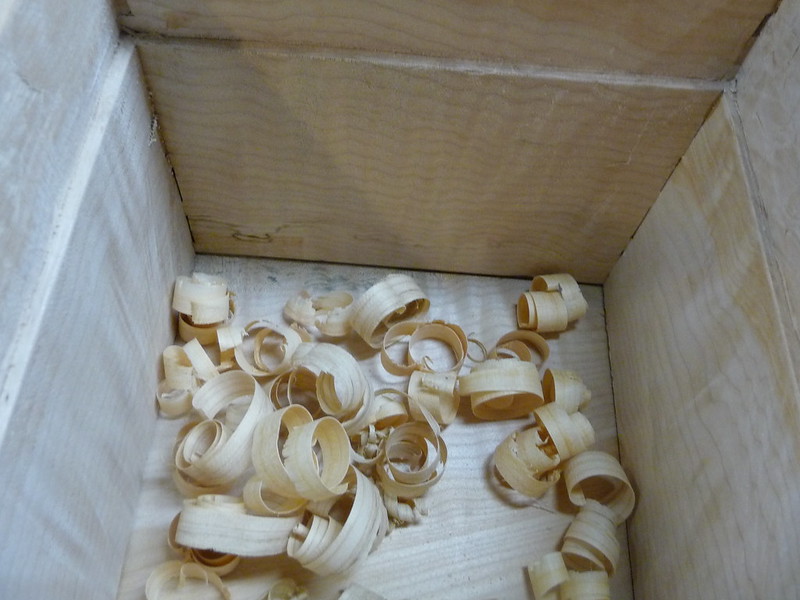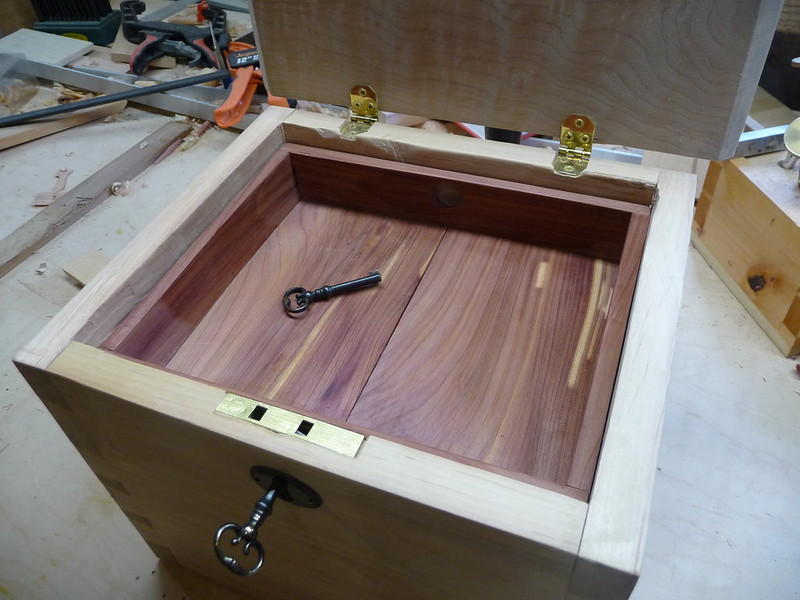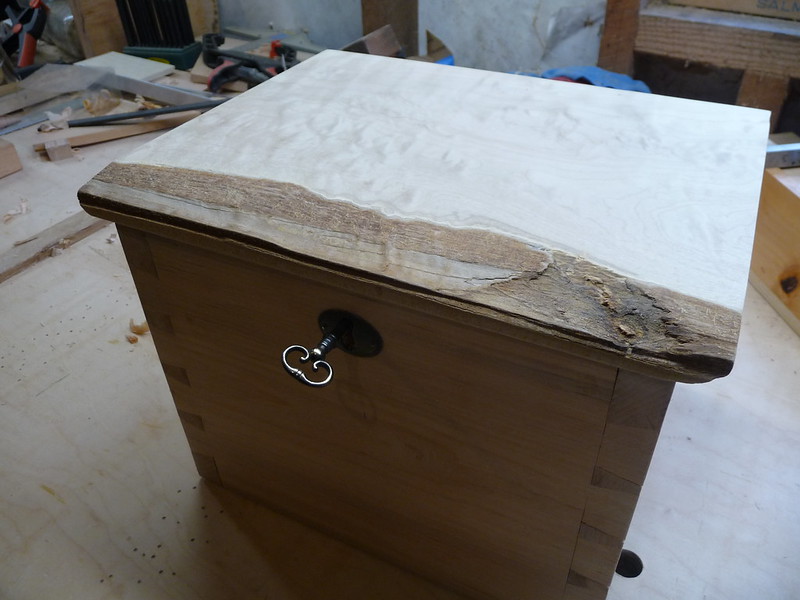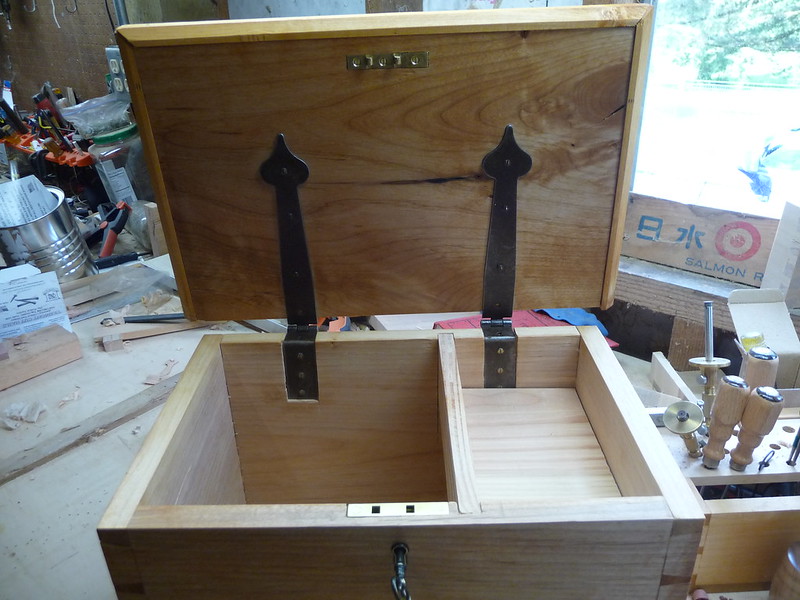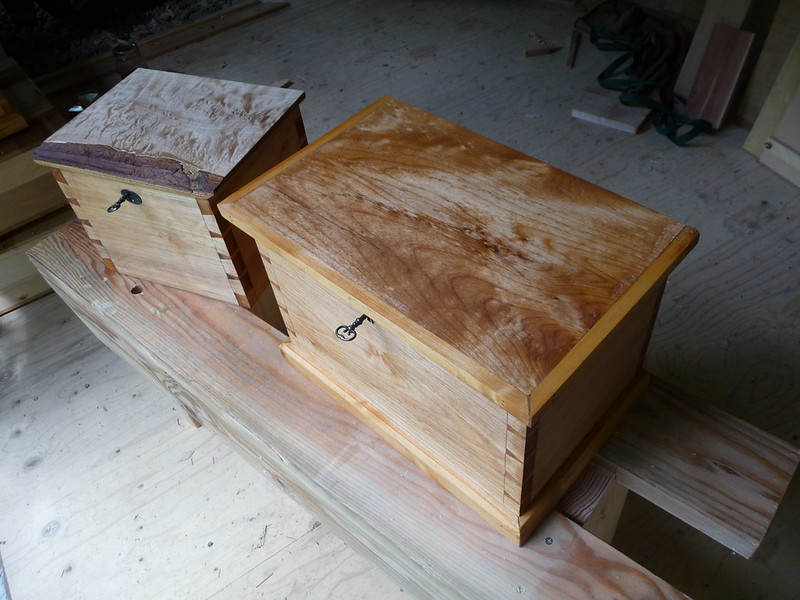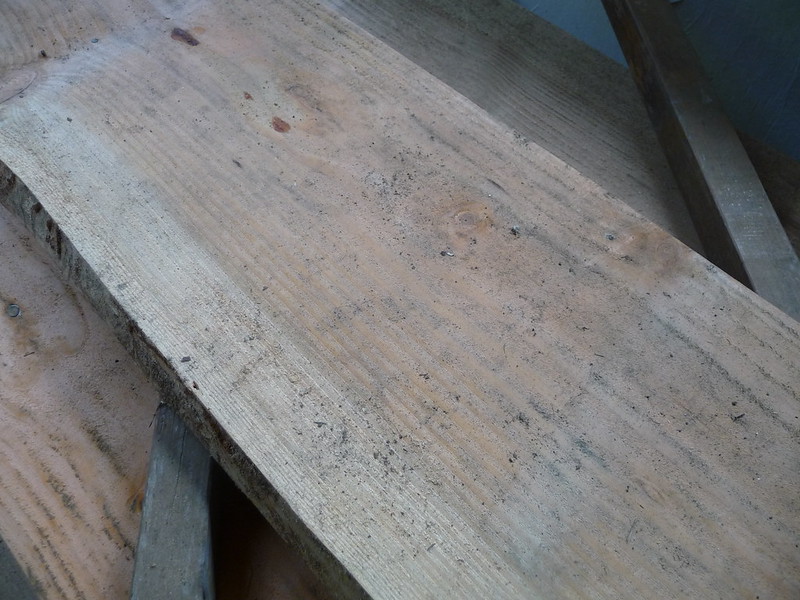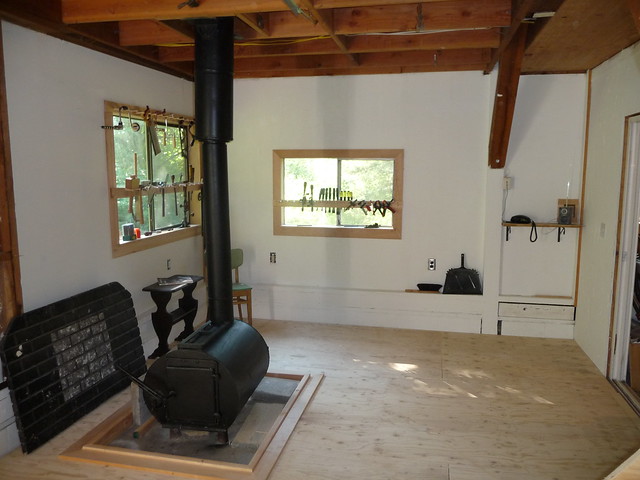Steve's write-ups are always detailed and informative. He documents his mistakes alongside his victories, and while his joy in successes is at times visible (and well-earned), his humility and good nature are also readily apparent. I should note I have not met the guy, but his writing seems to speak for itself and has been backed up by some pleasant email exchanges when I have had questions for him.
TJA:
How long have you been woodworking, and what changes have you seen
in the field since you started?
SB: I've been woodworking since I was about 10, when I helped my uncle repair a fire-damaged room in his house in Philadelphia. He was the one who taught me respect for my tools (meaning, I got in trouble when I mistreated his chisels!). I enjoyed wood shop in middle school and high school, where the emphasis was all on machines.
My activity ebbed and flowed over the years depending on what I had access to. I bought a Shopsmith in about 1985 with all the attachments, but over the years didn't do much with it. I loved to watch Norm Abrams and lusted after his shop. But it wasn't until I saw Don Weber on the April, 2004 issue of Popular Woodworking that I found my true passion, working with hand tools.
Fortunately, that was about the time Chris Schwarz was starting to emphasize hand tools. He and Roy Underhill have really helped to revive their use. I used to watch Roy and think he was crazy, but now I hang on his every word. And that revival is the real change in the field. Ironically coupled with the nearly complete elimination of industrial arts in schools, which is sad. There have been plenty of people over the years who hated shop class, but there have also been plenty for whom it was the one bright spot. I hate to think we're crushing real craft and skill out of our workforce.
TJA:
What is your favorite style to work in? what styles do you just not understand or have no interest in?
SB: I like working with hand tools, in any style, from rustic outdoor furniture on a shaving horse to fine pieces. I just love to make things and know it was my hands, my skills. The specific furniture styles at any given time depend on what skills I happen to be working on. I like Shaker, Queen Anne, Federal, Scandinavian ultrasleek contemporary. I guess my least favorite is heavily done Chippendale, some of it gets a little too over the top ornate for my tastes.
What I no longer have interest in is the jig-of-the-week for power tools. Why go to all that fussing about when you can just pick up the hand tools and do it directly? So I've probably become a bit of a snob about it!
TJA:
What tools do you always look forward to using and/or what operations do you most look forward to, time after time?
SB: A couple of my favorites are spokeshaves and wooden molding planes. Who doesn't get a big grin on their face taking curls with a spokeshave, leaving gleaming sensuous curves behind? Molding planes are about the same, plus they're so simple. But my absolute favorite is my Spofford brace, made about 1869. Light and simple, it works just as well today as it did 140 years ago, easily a match for anything made since.
TJA:
How much time do you actually get in your shop in a typical week?
SB: It varies wildly. I figure I average about 4 hours of shop time a week, but that's over weeks where I may spend 4 hours every night, exhausting myself, and weeks where I don't set foot in the shop. I try to pace it out evenly, but that never works. Too many things going on.
But I do get to spend a lot of non-shop time on woodworking related things, which I enjoy. It's as much fun writing about woodworking as doing it, though I occasionally have to remind myself that doing it is the actual point.
TJA:
Have you had any memorable masters or mentors help you gain the skills you currently possess? How did you meet them?
SB: I like to say my woodworking heroes are Al Breed, Garrett Hack, Phil Lowe, Chris Schwarz, and Roy Underhill. Skill, knowledge, experience, style, willingness to share. I've been fortunate enough to meet all but Roy, through Lie-Nielsen events and SAPFM membership. Plus there are others like Don Weber, Drew Langsner, David Marks, Paul Sellers, and Jim Kingshott. They've all been great teachers, in person, in video, in books. And I continue to meet more. For pure master-of-the-craft inspiration, George Wilson, who I follow on the Sawmill Creek Neanderthal Haven forum.
TJA:
You use almost only hand tools , and mostly antique or shop-made tools at that. How did you get started down this road?
SB: While I started out with all power tools, I've been sucked in, pulled down the slippery slope of hand tools. These days I do everything with them. The feelings of personal satisfaction, independence, and versatility are what drives it. I love learning a technique that's centuries old and finding it still works just fine. Similarly, I love putting a hundred-year-old tool back to productive use. It's not particularly rational, but I love that connection to the history and tradition.
I still have all my power tools. There are times when I'm working up a sweat when I might think about using them, but unless I really have a lot of pieces to do, it's not worth firing them up. The really hard labor only lasts for a little bit. Partly that's the luxury of being a hobbyist. I can choose to be stubborn about it if I want to.
TJA:
Your journal of building your Roubo-style work bench is amazingly thorough and informative, as are your videos about how you use it. You've mentioned a bit of follow-up regarding your feelings over time and modifications you have made, but what is your latest thinking on this bench, what you would do differently, and what you have modified over time? Do you use the crochet?
SB: Thanks! But I'm just standing on the shoulders of giants, Roubo for capturing the method of the day, and Schwarz for bringing it to our attention. I'm constantly amazed to see that those videos get dozens, even hundreds of hits a day. And I was particularly flattered when Don Williams says he refers people to them.
The mass of the thing is it's real strength. The only change I've made is to raise it up a bit. Fine tuning the height takes time unless you have experience. I made the crochet removable, then removed it and left it off. The leg vise works great, you can use it to crush stone, but sometimes I do like the speed of a quick-release English vise. My favorite methods of work holding are using battens to plane into (the piece isn't actually held down), and my Gramercy Tools holdfasts, which are a perfect blend of ancient and modern technology.
TJA:
You've hinted that your dayjob does not have much to do with woodworking, but what else you enjoy outside of woodworking and time with your family?
SB: I like to read a lot, and I like a lot of outdoor activities, though age is really starting to interfere with that. I like climbing rock and ice (never been more than a novice, though), hiking, backpacking, winter camping, kayaking, cycling, swimming. For a few years I did some weekend guiding with a small local outdoor company. The family got scuba certified a few years ago, but that proved a bit too expensive to keep up.
I love to sail, though I'm just a coastal day-sailer. I actually end up getting more time on the water winter frostbite racing than warm weather sailing. Sailing is like working with hand tools, it's me and my skills making it happen. Any drunken fool can pull a throttle, as you can see any sunny summer day in Boston Harbor. Sorry, being a snob again!
I was a Boy Scout Scoutmaster while my son was in Scouts, so I got to do a lot of those things with the Scouts and at summer camp, including skeet shooting on the shotgun range. Pumping a 12-gauge and blasting clay pigeons out of the air is quite satisfying. My only complaint was that too many times the boys would be happier to just sit around and talk about their skill with video game cheat codes than actually do anything! Great, now I know where the next Enron CEO is going to come from.
Plus I'm just a plain old geek and nerd. Is it geeky and nerdy? Cool!
TJA:
What is happening in the hand tool world (toolmakers, blogs, books, projects) that you think need more press?
SB: I think the explosion of online participation is fantastic. We really are in the midst of a communications revolution. It gives everyone an outlet and a way to share, across the entire world. Woodworkers love to share, show off their stuff and ogle other people's. It's a great community and it will help keep the skills and traditions alive. There will be pain for other media, particularly hardcopy publishers, but that's probably been the case since Gutenberg had his bright idea.
TJA:
You recently posted about teaching your daughter some basic skills. Has the interest held?
SB: Yes, but it does run afoul of teenage inertia! Plus the fact that she's finishing up her senior year and getting ready to start college, there's a lot competing for her time, energy, and attention. So I don't push her, I just remind her we need to spend time on it. She really does enjoy it. She has a true multifaceted creative streak, along with incredible intelligence and incredibly hard head (sorry, dear, but them's the facts). She'll be attending Hampshire College, which I can best sum up by saying, "Different. In every possible way." I think it's a fantastic fit for her.
TJA:
You have also offered private instruction, has this continued?
SB: It has on a small scale, but I hope to boost it. I just posted on my blog an announcement about the Close Grain School Of Woodworking. Impressive sounding, eh? Starting May 1, I'll be offering small group and private classes out of a friend's barn. Really just a small-scale operation, but I hope it will be a practical way to share the skills. If you build it, will they come? We'll see!
I don't expect to make much money at it, maybe just make the hobby pay for itself, but I really do enjoy teaching, sharing the knowledge and seeing it dawn in others.
TJA:
In one of your posts, you worked with a group of younger kids to do a construction project. What were your main lessons learned in working with younger people?
SB: As with anything else, there's a range of engagement. I ran a Lego robotics club at my kids' middle school for 4 years, and I saw the same thing I saw with Boy Scouts, what I called the engagement curve. At the high end, a small number of kids just plain got it. All you had to do was put stuff in their hands, point them in the right direction, and get out of their way. You unleash them. They would come back the next time having thought all about it. At the low end, another small number wanted to be there, but didn't want to actually do anything. They just wanted to be a part. Ok, fine, as long as they're not bothering anybody. Then the middle majority were happy enough participating and could do what they needed to, but stopped thinking about it as soon as they left for the day.
But I do think that those who are genuinely interested can get a lot out of it. I think the whole manual training thing is vital for kids. Some just won't be engaged no matter what, so it's not worth wasting time trying to convince them. But for the rest, it's engaging the whole mind and body, the hands and the brain, why Doug Stowe calls his blog The Wisdom Of The Hands. Kids really can do great stuff when they're motivated and you let them, even if their attention or ability runs out quickly. It's interesting to see on Doug's blog how the history of all that hasn't really changed much. Plus a little sad to realize that in 150 years of trying to make education more progressive and effective, not a whole lot of progress has been made.
TJA:
Share a ridiculous mistake you have made in the shop, and what you learned from it.
SB: Well, I have made gear teeth when I meant to make dovetails, and I'm constantly finding little bloody nicks on my fingers. How did I do that?
The worst mistake was when I was resawing a magnificent piece of full-width mahogany for my Townsend document chest, and right in the middle of the board, the saw came through the surface because it was bowing inside. The other resaw cuts in it weren't much better, to the point that both pieces were ruined. There I learned the limit of my resawing ability. For the remaining pieces, I ripped them in half first, resawed the halves (i.e. half-width resawing), them edge-glued them back together. A little more work over all, but then I didn't turn gold into firewood.
TJA:
Do you listen to music in the shop? What kind?
SB: I'm a total NPR junkie, not even changing the radio when the fundraising is going on or Wait Wait Don't Tell Me repeats. But I do listen to music sometimes. I like Yes, Afro Celt Sound System (by various names), Santana, Sara McLachlan, Silversun Pickups, Zero 7, Maroon 5, Pink Floyd (Welcome To The Machine being the greatest album ever made), Blue Man Group, Mike Oldfield, even Halo and BSG soundtracks! Recently I've been getting stuff I hear in my wife's car on Sirius XM Chill channel.
TJA: Tangential trivia: I used to live right around the corner from the liquor store in Los Angeles where the Silversun Pickups took their name. Thanks, Steve!

